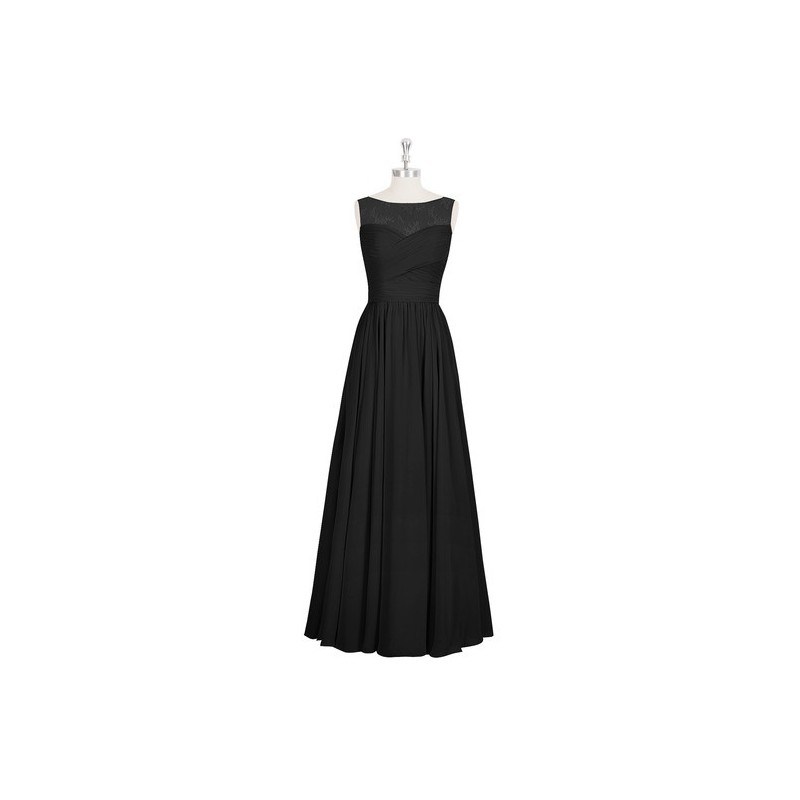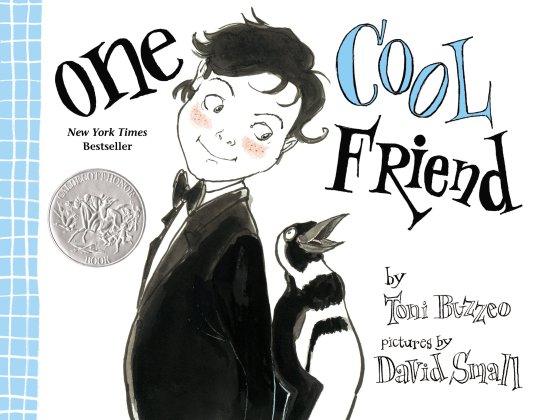
This picture book resolves around Elliot who is a very sophisticated young man. One day when he visits the zoo with his father, Elliot sees an exhibit of penguins. The arctic birds remind Elliot of himself with their black, suit-like pelts and laid back demeanor. Elliot decides to take one home with him as a pet, but of course, the penguin does not behave like a proper gentleman and causes a ton of disorderly trouble. Elliot somehow has to make sure the penguin doesn’t destroy the house without his strict father finding out!
Classroom Activities:One Cool Friend would be great book to use for prediction. At the beginning of the story, the students could predict what the title means, and who the “cool friend” could possibly be in the story. As they read along and it revealed that Elliot takes home a penguin, the children could predict what is going to happen next and could be asked questions such as: “Do you think the penguin will be able to live in his house?”
The story could also be used to teach students about simile. The children can be given examples from the book, such as “Elliot was like a penguin” or “Elliot was as sophisticated as penguin.” The students could then create their own similes, comparing themselves to an animal of their choice. This will be a fun and informative way to introduce them to similes and have them write their own examples.
Teaching students about pet responsibility could be another activity. The students should know that, firstly, they should not steal animals from the zoo (or anywhere) because it is wrong. They should also be informed that they should not get a pet unless they are able to take care of it. They need to have the proper resources and living space, and the money for possible vet appointments. The children also need to be prepared for taking the time and effort to care of the pet. One Cool Friend could be used as an example of a poor pet owner because Elliot took his pet without permission and was not prepared or equipped to take care of the penguin.
A Sick Day For Amos McGee by Philip C. Stead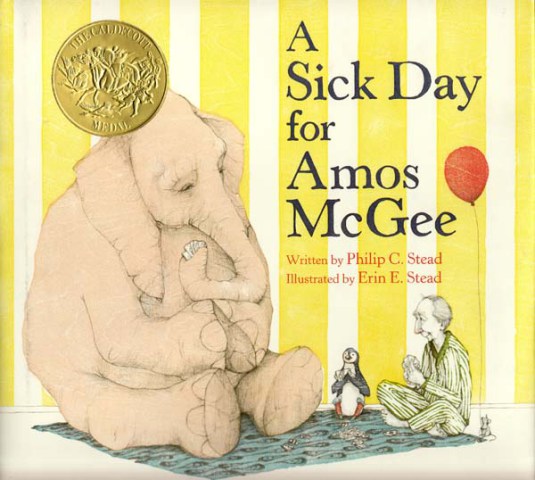
The story in this adorable picture book is about Amos McGee who takes care of his friends every day, including a runny-nosed rhino, a chess-playing elephant, a race-happy tortoise, and more. But one day when Amos wakes up sick, he cannot make it to the zoo. Feeling lonely and missing their companion, the animals adventure away from the zoo and visit Amos at his home. They make up for all of his kindness by switching roles and taking care of him.
Classroom Activities:One activity could be to have students rewrite parts of the story using different animals. The main story would stay the same, but the students would have to change the animals that take of care of Amos. Based on the animals and their characteristics, the students will have to change what the animals do with Amos. This will act as both a research project and a creative activity for the students to learn about animals and apply what they learn in an imaginative way.
This story could be also used to teach children a health lesson. The students could be taught the basics about colds or viruses and how they make people sick. The children also could be informed on how to prevent getting sick and how to take care of themselves when they become sick. Examples from the book could be taken to show what children can do to get over their colds.
As the book is read, the children may wonder if the animals in the story will get sick from being around Amos McGee. Because of this, a lesson teach students how human and animal immune systems are different and may not be affected by the same illnesses. The class could study and research the different animals to see how their anatomy works, what kind of ailments they suffer from, and what illnesses they are immune to.
The Chicken Thief by Beatrice Rodriguez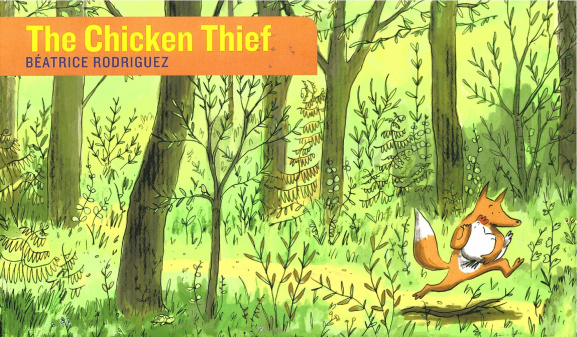
This text-less picture book is about how a white chicken is stolen from a farm by a sneaky fox. Witnessing the crime, a bear, a rabbit, and a rooster chase after the fox, hoping to save their friend. Over mountains and through woods, they run day and night only stopping to rest when they are completely exhausted. Eventually they cross the ocean and finally arrive at the fox’s house, prepared to cease the fox before he eats their friend. However, they are shocked to find out the fox’s true intentions.
Classroom Activity:I would have the children turn The Chicken Thief into a comic book. The children would have to add in speech or thought bubbles, and write that they think the characters would be saying or thinking during the events of the story. They could also add in sound effects. This will help the children use and apply their senses.
This story could also be used to teach a biology lesson. It should be obvious to most students that foxes usually eat chickens and this could be used to introduce the basics of the food chain. They could learn about predators and consumers and what animals fall under these categories. It could also be pointed out that bears are predators while rabbits and roosters are prey, and would not usually coexist peacefully. Certain animals’ hunting patterns could also be studied, such as how foxes are scavengers and this is why they tend to steal their prey.
Another activity that can be used for this lesson is changing the ending to the story. The children could make up their own new ending for the story. They would not be allowed to write about the chicken being eaten, and instead would need to be creative and try to throw the reader off guard. This will challenge the students to think outside of the box, and not to rely on what is expected in a story. It will also let be creative and will help them practice their writing skills.
Chicka Chicka Boom Boom by Bill Martin Jr. and John Archambault
In this story, a bunch of mischievous letters (a through z) decide to play a game and climb a coconut tree. Through rhymes and tongue twisters, each letter climbs up the tree until it can no longer hold the letters’ weight. The whole alphabet and tree goes crashing down with a big (chicka chicka) boom! The adult letters (A through Z) then come to the rescue, managing to get every letter untangled from the branches and bandaging up all of the injuries. The alphabet rests their wounds, but later that night, the fun continues as they begin another game in the moonlight.
Classroom Activities:Chicka Chicka Boom Boom could be used to review the alphabet. The book could be read aloud to the class, and after every page, the children would identify the letters in the illustrations. Next, the students could guess what letters were going to be on the next page. This activity will help the students identify the different letters of the alphabet and also help them practice and predict its order.
Each child could also be assigned a letter from the alphabet. Next, they will have to find multiple words that start with that letter and write it on their letter. The students would then look at each other’s letters and learn all of the words from the different letters. This will act as a creative vocabulary lesson for the students.
Students could also write their own story or poem using letters as characters. They could choose one letter, multiple letters, or the whole alphabet if they choose. The story will also have to rhyme just like Chicka Chicka Boom Boom, but does not need to have tongue twisters or rhythmic patterns like the book because this may be too difficult for young children.
Bark, George by Jules Feiffer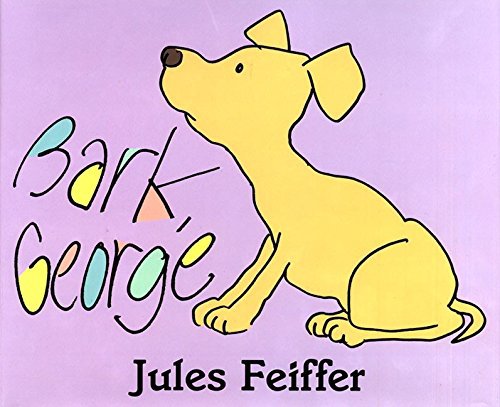
No matter how many times he tries, George just can’t please his mother. Every time he barks, it doesn’t sound like a dog should. Instead, all kinds of other sounds come out, like “meow” or “moo.” Worried about her son, George’s mother takes him to a vet. They quickly realize the problem. Inside George was not only a cat, but a duck, a pig, and a cow! When all of these animals are removed, George can finally bark like a normal dog! Or can he?
Classroom Activities:An activity for Bark, George would use prediction and the students’ knowledge of animals. The story would be read aloud to the children and after an animal noise is mentioned, I would ask the children to tell me what animal is associated with that sound (i.e. “meow” = cat). Later on in the story, when George visits the vet, I would have the students repeat these sounds to test their memory of the story.
The story could also be used to teach a health lesson. A discussion could be opened with the children about George’s diet and if it would be considered healthy. After the discussion, it should be emphasized that children should not go around eating anything they want the way George did. They need to be careful and make sure that the food is safe because it could have something they are allergic to, could have alcohol or medicine in it, or could be poisonous. Explain that the children should always ask an adult before they eat something they are not familiar with.
Another activity that could go along with this book is a discussion about whether or not Bark, George is fiction or nonfiction. A dog not being able to bark and going to the vet may seem like pretty believable events. Even a dog eating a cat or duck may seem realistic. However, there are many aspects of Bark, George that could not happen in real life and therefore make it fiction.
Are you interested in finding some chapter books for older students or your middle school class? Click here to take a look at my other post about wonderful chapter books that portray the changing of the seasons.
Advertisements Share this:




